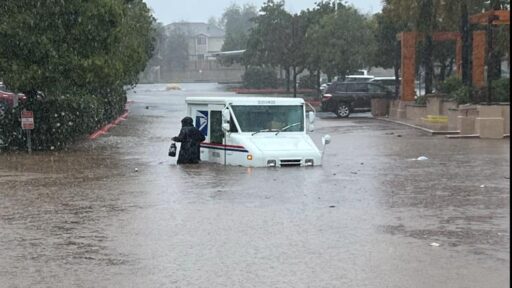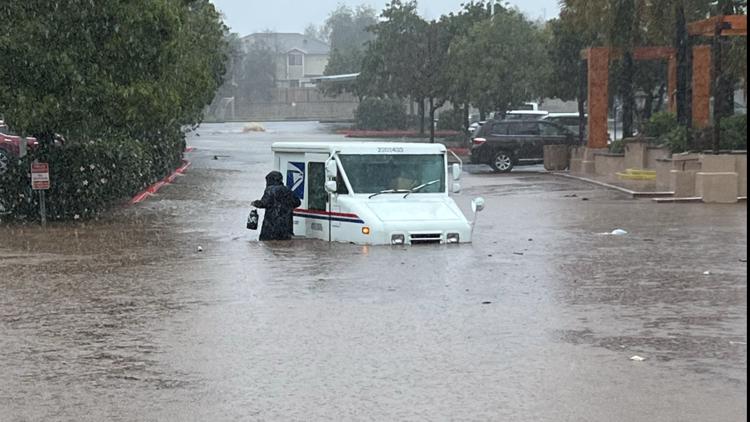The San Diego Flooding Impact
The city of dreams San Diego, is situated along Southern California’s picturesque Pacific Ocean coast. Unfortunately, the city has recently faced severe flooding due to unprecedented heavy rainfall. Along the 1.3 million population, it holds the position of the eighth-most populous city in the United States and the second-most populous in California. The ‘San Diego flooding’ effect is profound, especially on the lives that live there—touching nearly every aspect of life in this vibrant city.
One of the most extreme and quick impacts has been the extensive property damage across various neighborhoods. Homes and businesses in low-lying areas such as Mission Valley, Ocean Beach, and the Gaslamp Quarter have been particularly suffered a hard hit. Individuals reported the San Diego flooding issues and their significant losses by water inundating basements, living spaces, and commercial properties, leading to costly repairs and displacements. The flooding has also compromised access to utilities, leaving thousands without electricity, clean water, and functional sewage systems for extended periods.
The disruption to transportation infrastructure has exacerbated the situation. Major thoroughfares, including Interstate 5 and State Route 163, experienced terminations because of flooding, creating critical setbacks and rerouting of traffic. Public transportation administrations, for example, the San Diego Streetcar and transport lines, confronted interferences, further convoluting the day-to-day drives and crisis reaction endeavors. The damage to critical infrastructure has underscored the vulnerability of the city’s transportation network to extreme weather events.
Economically, the flooding has inflicted a heavy toll on San Diego. Local businesses, particularly those in the tourism and hospitality sectors, have reported steep declines in revenue. The city’s clamoring for the travel industry, which draws in millions every year, has seen a sharp reduction in guests because of the unfriendly circumstances. Moreover, crisis reaction costs and the unavoidable long-haul recuperation endeavors have stressed civil financial plans.
Local authorities have mobilized significant resources to address the immediate needs and long-term recovery from the flooding. Crisis administrations, including the San Diego Fire-Rescue Department and neighborhood policing, have been at the very front of rescue and help tasks. Nonetheless, the difficulties in overseeing such a disaster are huge. Planning endeavors across different offices, securing adequate funding, and ensuring timely communication with residents are critical aspects that require continuous attention.
In light of these events, understanding the flood factor and the associated risks becomes paramount for residents and policymakers alike. The recent flooding in San Diego serves as a stark reminder of the city’s vulnerability to natural disasters and the urgent need for comprehensive preparedness and mitigation strategies.
What is Flood Factor and Its Relevance to San Diego
Flood Factor is an innovative tool designed to assess the flood risk for individual properties. This comprehensive tool leverages a combination of historical data, current environmental conditions, furthermore, future environment projections to assess the probability and possible effect of flooding. The strategy behind Flood Variable includes complex calculations that break down precipitation designs, stream rates, and seaside flood patterns to give an exact gamble evaluation to every property.
In the context of San Diego, the Flood Factor holds significant relevance. Although downtown San Diego is classified as having a minor risk from flooding, the instrument permits residents and landowners to acquire a nuanced comprehension of their particular flood risk. By entering an area into the Flood Factor stage, clients get a distinct report that integrates the property’s bet rating, the number of past floods, and future flood projections. This important data engages inhabitants to come to informed conclusions about flood protection, property ventures, and flood readiness.
For San Diego residents, understanding flood risk is crucial, especially in light of recent events and changing climate patterns. Flood Factors can help homeowners identify vulnerabilities and take proactive measures to mitigate potential damage. For example, residents can use the tool to determine whether additional flood defenses or modifications to their property are necessary. It also assists property investors in evaluating the long-term viability of their investments by considering flood risk as a critical factor.
Moreover, monitoring flood risks through the Flood Factor empowers the local area to advocate for better framework and crisis reaction plans. By featuring regions with higher flood chances, city organizers and policymakers can focus on assets and execute powerful flood-the-board procedures. In turn, this can enhance the overall resilience of San Diego against future flooding events.

Read More interesting Topics With : YOURS
- Roblox Unblocked 66: Unlocking Endless Gaming Possibilities
- CoolMathGames Unblocked: Your Ultimate Destination for Fun and Learning
- Derrick Henry Cowboys: A Name that resonate in NFL
- The Alexee Trevizo Case: Latest Updates, Verdict Insights, and Ongoing Legal Battles in 2024
- Tyson vs Paul: A Clash of Generations in the Boxing Ring





